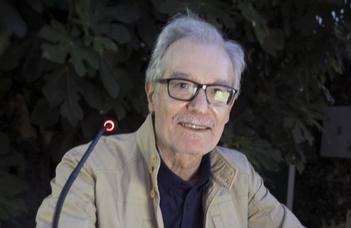"Synergy is fundamental in research"
When did you hear about that you would receive the title of ‘doctor et professor honoris causa’? What was your first reaction?
Rector László Borhy called me to tell me the news. It was on 20 December and I was having a meeting with a former Ph.D. student about our future projects together. I was told that the University Senate had accepted my nomination a few days earlier and I would be officially notified soon. I was greatly surprised. I did not expect it at all and was very happy about it.
Where did you do your university studies? Who were your professors?
I studied at the University of Zaragoza and graduated in 1971. I was a student of archaeology and ancient history. I have always been interested in questions related to the antiquity. In 1976, I defended my doctoral thesis written on ancient Roman funerary steles that had been discovered in two administrative areas of Hispania Citeror (Conventus Caesaraugustanus and Cluniensis). In Spain, the science of ancient history was institutionalized in the 1970s, and I had distinguished professors in archaeology. I really loved the courses held by Antonio Beltrán on epigraphy and numismatics. We visited numerous museums and ancient sites throughout Europe and Anatolia with him. The synergy that developed between classical philology, archaeology, and ancient history at the Institute of Ancient Sciences of the University also shaped my research. My colleagues working here use an interdisciplinary approach in their research.
What are you exactly engaged in within ancient history? How does this relate to classical studies on the international level?
My interests have always been focused on the history of religion in the ancient world, particularly in the western provinces of the Roman Empire. This has led to my research on cultural transfer and appropriation as well as otherness in religion. Within the latter topic, in the past 15 years
we have studied the spaces and contexts of magical-religious customs in several projects
in the western Latin provinces with an international research team.
Who made the greatest impact on your academic career?
I found the approaches of anthropology, sociology, and other disciplines very useful, which allowed me to have a look at the problems from a different perspective. John Scheid’s thinking impressed me very much, and we are in good scholarly relationship to this day. I was also hugely influenced by Géza Alföldy, not only in a scientific sense but also beyond that, as I was honoured to have his friendship. I attended his inauguration as an honorary doctor of the University of Tarragona and I will never forget how movingly he spoke about his homeland. I even suggested that he should write a book about his memories — not limited to the subjects of ancient history and epigraphy — which we would publish in Spanish.
As a scholarship holder and visiting professor, what experience did you gain at foreign universities?
I would like to highlight the time spent at Cambridge and Oxford in particular. In the former, I did research together with Keith Hopkins (King’s College), who adopted a novel approach to the history of ancient Rome. In Oxford, I worked first with Alan Bowman and then with Roger Tomlin. I have also been a visiting lecturer at Bristol and at the University of London, where the work was led by Greg Woolf until recently. I also gave courses for doctoral students as a visiting lecturer at the University of Rosario in Argentina, and have had strong relationship with Professors Mastrocinque and Buonopane at the University of Verona.
What connections have you had with Hungary, Budapest, and Eötvös Loránd University? When did you visit us for the first time?
I first visited Eötvös Loránd University within the framework of the Erasmus programme many years ago,
when the University of Zaragoza and Eötvös Loránd University concluded an agreement. I later had a close relationship with Miklós Szabó, who was the rector of ELTE at that time, and with László Borhy I have had particularly fruitful scholarly cooperation. We met several times at our universities and I also visited Brigetio on many occasions.
Who do you work with from Hungarian classical philologists and archaeologists?
Over the past decade, I have collaborated closely with György Németh, as he is also a member of the international team I have consulted on magical-religious rituals in several research projects, and whose book, Supplementum Audollentianum, was published in Zaragoza, Budapest, and Debrecen in 2016. I also work with Árpád Nagy from the Museum of Fine Arts and László Takács from Pázmány Péter Catholic University. I have also stayed in close contact with Erzsébet Jerem, who published my book entitled Die Religion im keltische Hispanien at Archeolingua in 1998, and with whom we have a common interest in Celtic research. I have also worked with Andrea Barta, whom I met through the Erasmus programme and who, just like me, is interested in curse tablets and the magical-religious world in general.

